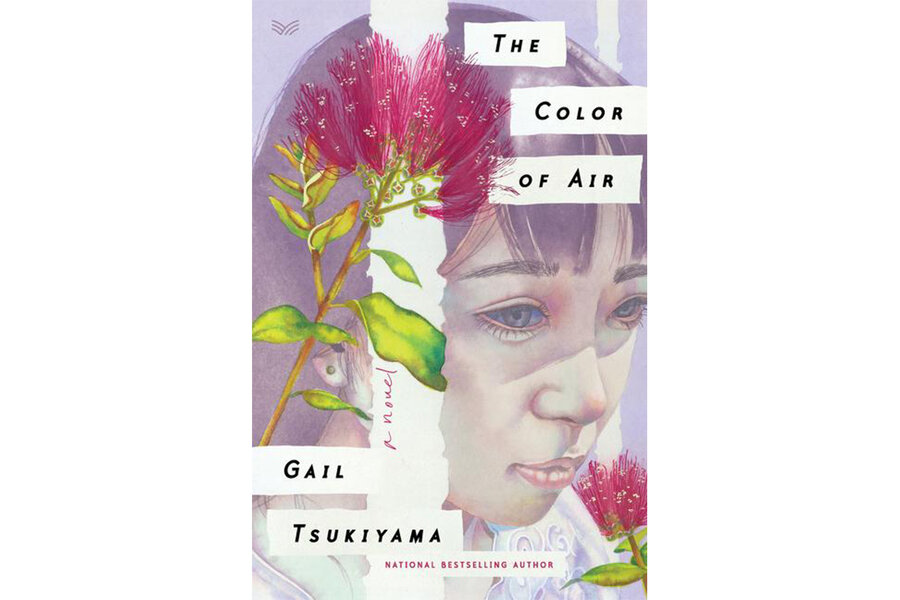Hawaii’s Big Island creates the setting for a novel about family and memory
Loading...
In Mariko Abe’s otherwise uncluttered bedroom in Hilo, Hawaii, a dresser is covered with small objects – stones and shells collected over the years, carved kukui nuts, a piece of obsidian glass from a memorable trip to a lava cave.
“I’m leaving a trail of my life,” she tells the man who brought her to that cave, Koji Sanada. “Tells folks where I’ve been and what meant something to me.”
Such small things add up to riches in “The Color of Air,” Gail Tsukiyama’s novel of enduring love – and, just as important, enduring friendships. A weekly card game of hearts in a close-knit community, an annual ritual of picking mangoes from a family tree, a recurring gift of toy train cars – Tsukiyama knows these quiet actions build connections as meaningful as any earth-shattering dramas. It’s even telling that the story’s backdrop is the 1935 eruption of Mauna Loa, a notable event but not one of the most destructive blasts in the volcano’s history.
The book is the eighth novel from Tsukiyama, whose website biography notes that she was born to a Chinese mother from Hong Kong and a Japanese father from Hawaii. It’s the first book she’s published in eight years, and one of several of her works set in or around the first half of the 20th century.
Tsukiyama’s descriptions of Hilo are immersive and intimate, taking readers from muggy heat and scorched sugar cane stalks to bright blossoms and choppy ocean waves. The natural world is integral here, and central to her characters’ lives: “From the moment Koji set foot onto the black lava rocks as a boy, he knew that the island was a living organism and they were simply guests.”
Spirits are present everywhere as well. The line between present and past is as intangible sometimes as the barrier between the dead and the living.
The effect is poetic, never more so than in Mariko’s thoughts when she is ill and near death. Further illuminating the book’s title, she muses, “I won’t go far, I promise, yeah. Like this island, I’m already remaking myself. Look and you will feel me everywhere, in the rocks, in the water, in the color of the air.”
Beyond the threat from volcanic activity, the book’s setting provides plenty of tension. The characters cope with labor strife in the sugar plantations and the related racism, poverty, and hierarchical struggles facing the Japanese, Chinese, Filipino, and Portuguese workers.
The story begins in 1935, two years after Mariko’s untimely death, when her grown son Daniel returns to the village. Daniel is a doctor, the first “Hilo boy” to mark that success, overcoming institutional racism as the only “Oriental” in his program in Chicago. When a work tragedy robs Daniel of his confidence, he’s welcomed with joy back to Hilo, where he’s virtually a son to Mariko’s circle of friends. Daniel’s homecoming leads to old secrets being revealed and several characters coming to terms with their choices in life.
The book moves back and forth through the decades, with various characters taking turns at narration, but Koji feels the most central and vivid throughout. He follows in his father’s footsteps, becoming the fastest cane cutter on the Big Island. His skill earns him a measure of security in the brutal fields, despite his quiet personality.
Ultimately, while no one escapes the hardships of life on the island, for most the benefits are worth the cost. Daniel recognizes this when Pele, goddess of fire and volcanoes, rumbles in warning. He watches “a tall, pale geologist from the Volcano Observatory Center, who talked about the latest eruption and the eventual lava flow toward Hilo if it didn’t stop.”
“Whatever was going to happen, they’d find a way through it,” Daniel says of the villagers. Some of their stories are small, but in Tsukiyama’s hands we’re reminded that even ordinary lives contain extraordinary depths.








